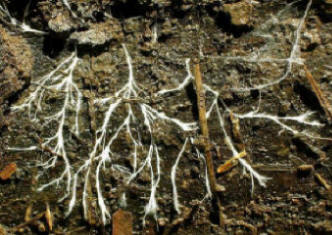Nutrition
Saprotrophic Lifestyle
Unlike plants or some bacteria and protists, fungi are unable to
manufacture their own food from abiotic sources like the sun. So, in
their quest for nutrients, many fungi, including Pleurotus,
adopt their nutrition from other decaying organisms.
They go about this by excreting digestive enzymes through the tips of root-like extensions called hyphae. The enzymes break down their food leaving a space filled with nutrients that the hyphae can continue growing into, absorbing, and digesting again as it feeds. The hyphae branch and grow into a thicker mass called a mycelium, which maximizes the surface area through which feeding can take place.
Pleurotus Ostreatus
Oyster mushrooms grow on decaying wood and trees, spreading their hyphae into the plant to feed on carbohydrate-rich cellulose. Pleurotus ostreatus in particular, prefers the lignin that makes up the secondary cell walls of hard woods from angiosperm trees. But this lifestyle comes with a drawback, the wood that it feeds on doesn't provide the nitrogen that Pleurotus needs for survival. The solution? Continue to the adaptations page to find out.

